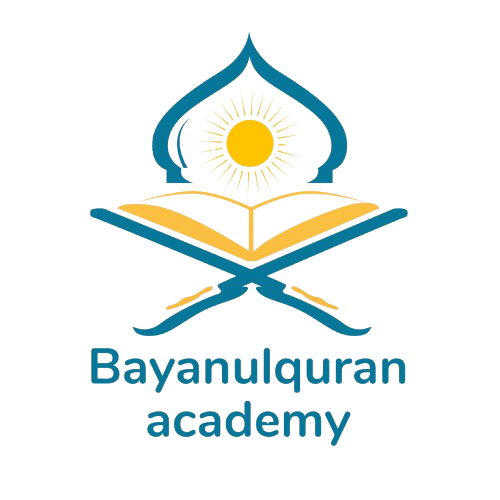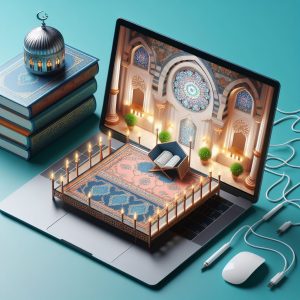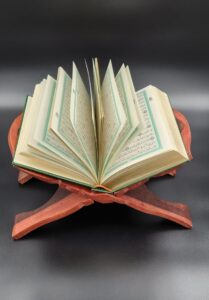In the tapestry of Islamic scripture, the Arabic alphabet in the Quran shines as a radiant thread that weaves through the Quran’s timeless verses. This elegant script, with its 28 letters, is woven across the pages, each letter a brushstroke in the divine masterpiece. From the graceful curves of Alif to the bold stance of Qaf, each letter carries a unique beauty and significance.
Learning the Arabic alphabet in the Quran is not just about mastering a script; it is a journey into the heart of Islam, a path that leads to a deeper understanding and appreciation of the Quran’s profound teachings.
As Muslims embark on this journey, they are not just learning letters; they are unlocking the secrets of a sacred language, connecting with a tradition that spans centuries, and embracing a legacy of wisdom and enlightenment.
Table of Contents
The Arabic Alphabet in the Quran:
The Arabic alphabet is fundamental to the Quran, which is written in Classical Arabic, a form of the language revered for its purity and eloquence. The Quran’s composition in Arabic has elevated the language to a sacred status, making the alphabet itself a vital tool for conveying the divine message.
One of the distinguishing features of the Arabic script used in the Quran is the absence of capital letters, which contrasts with many other languages. This uniformity in letter size and shape adds to the aesthetic harmony of the script, which is often praised for its beauty and flow. The Arabic alphabet also includes diacritical marks that guide pronunciation and meaning, which are especially important in Quranic recitation.
What are the forms of the Arabic alphabet in the quran?
The Arabic alphabet used in the Quran has distinct forms that change depending on the letter’s position within a word. Each letter can have up to four different forms: isolated, initial, medial, and final. Here is a summary of these forms:
| The Arabic Letter (Isolated Position) | Initial Position | Medial Position | Final Position |
| ب | بـ | ـبـ | ـب |
| ج | جـ | ـجـ | ـج |
| س | سـ | ـسـ | ـس |
| ك | كـ | ـكـ | ـك |
| م | مـ | ـمـ | ـم |
Do You want to make learning the Arabic alphabet fun? don’t miss reading 30 Best Arabic Alphabet Games.
Arabic Alphabet in the Quran:
The Arabic alphabet consists of 28 primary letters. These letters have four different forms based on their position within a word: isolated, initial, medial, and final. This variability in form is crucial for maintaining the integrity of the Quranic text. For example:
1- The Letter أ (Alif):
Initial: أَنزَلْنَا (Anzalna) – “We sent down”.
Medial: رَأَسُك (Ra’suka) – “your head”.
Final: مَلْجَأ (Malja’) – “refuge”.
2- The Letter ب (Ba):
Initial: بَحْرٌ (Bahr) – “sea”.
Medial: سَبَبٌ (Sabab) – “cause”.
Final: كِتَابٌ (Kitab) – “book”.
3- The Letter ت (Ta):
Initial: تَقْوَى (Taqwa) – “piety”.
Medial: مُسْتَقِيمٌ (Mustaqim) – “straight”.
Final: بَيْتٌ (Bayt) – “house”.
4- The Letter ث (Tha):
Initial: ثُمَّ (Thumma) – “then”.
Medial: مَوْثُوق (Mawthuq) – “firm”.
Final: بَثَّ (Bathth) – “dispersed”.
5- The Letter ج (Jim):
Initial: جَنَّةٌ (Jannah) – “heaven”.
Medial: مَجْرَىٰهَا (Majraaha) – “course”.
Final: خَرَجٌ (Kharaj) – “reward”.
6- The Letter ح (Ha):
Initial: حَسَنَةٌ (Hasanah) – “good”.
Medial: مَحْرُوثٌ (Mahrooth) – “tilled”.
Final: رُوحٌ (Ruh) – “spirit”.
7- The Letter خ (Kha):
Initial: خَيْرٌ (Khair) – “good”.
Medial: يَخْتَصُّ (Yakhtassu) – “chooses”.
Final: بَرْزَخٌ (Barzakh) – “barrier”.
8- The Letter د (Dal):
Initial: دِينًا (Dinan) – “a religion”.
Medial: مُدَبِّرَاتٌ (Mudabbiratun) – “arranging”.
Final: السُّجُودِ (Alsujud) – “the prostration”.
9- The Letter ذ (Dhal):
Initial: ذُو (Dhu) – “possessor”.
Medial: مَاذَا (Matha) – “what”.
Final: مَجْذُوذٍ (Majthuth) – “cut”.
10- The Letter ر (Ra):
Initial: رَبِّ (Rabbi) – “Lord of”.
Medial: قُرُونٌ (Quroon) – “generations”.
Final: الصّبر (Sabr) – “patience”.
11- The Letter ز (Zay):
Initial: زَكَرِيَّا (Zakariyya) – “Zechariah”.
Medial: مَزَاجُهَا (Mazaajuha) – “its mixture”.
Final: عَزِيزٌ (Aziz) – “honourable”.
12- The Letter س (Sin):
Initial: سَمَاءٌ (Sama’) – “sky”.
Medial: مُسْلِمٌ (Muslim) – “Muslim”.
Final: نَفْسٌ (Nafs) – “self”.
13- The Letter ش (Shin):
Initial: شَجَرَةٌ (Shajarah) – “tree”.
Medial: مَشْهَدٌ (Mashhad) – “scene”.
Final: عَاشٌ (Aash) – “lived”.
14- The Letter ص (Sad):
Initial: صَدْرٌ (Sadr) – “chest”.
Medial: مَصْدَرٌ (Masdar) – “source”.
Final: مَّرْصُوصٌ (Marsous) – “lined up”.
15- The Letter ض (Dad):
Initial: ضَرَبَ (Dharaba) – “struck”.
Medial: فَضْلٌ (Fadl) – “bounty”.
Final: عَرِيضٍ (Areed) – “broad”.
16- The Letter ط (Ta):
Initial: طُورِ (ṭūri) – “Mount”.
Medial: بَطَراً (Batran) – “in rebellion”.
Final: الصِّرَاطِ (Alserat) – “the path”.
17- The Letter ظ (Ẓa):
Initial: ظَلَمُوا (ẓalamū) – “they have wronged”.
Medial: لَا يَظْلِمُونَ (lā yaẓlimūna) – “they do not wrong”.
Final: غَلِيظٍ(Ghalez) – “harsh”.
18- The Letter ع (‘Ayn):
Initial: عَبَثٌ (‘abathun) – “idle talk”.
Medial: لِيَعْبُدُوا (liya‘budū) – “that they may worship”.
Final: جُوعٍ (gou’) – “hunger”.
19- The Letter غ (Ghayn):
Initial: غَيْرِ (ghayri) – “other than”.
Medial: مُغْرَمَةٌ (mughramatun) – “burdened”.
Final: بَالِغُ (Balegh) – “attaining”.
20- The Letter ف (Fa):
Initial: فَسَادًا (fasādan) – “corruption”.
Medial: طَائِفَتَانِ (Taefatan) – “two groups”.
Final: الصَّيْفِ (Alsaif) – “summer”.
21- The Letter ق (Qaf):
Initial: قَوْمٌ (qawmun) – “people”.
Medial: فَتَقُولُ (fataqul) – “she says”.
Final: الفَلَق (Alfalq) – “the daybreak”.
22- The Letter ك (Kaf):
Initial: كُلُّ (kullu) – “every”.
Medial: مِمَّا يَسْتَكْبِرُونَ (mimma yastakbirūna) – “what they were arrogant about”.
Final: مالِك (Malek) – “owner”.
23- The Letter ل (Lam):
Initial: لَكُمْ (lakum) – “for you”.
Medial: مالك (Malek) – “owner”.
Final: أَنْزَلَ (Anzal) – “revealed”.
24- The Letter م (Meem):
Initial: مَا (mā) – “what”.
Medial: أَنۡعَمۡتَ (An’mt) – “you have granted”.
Final: عَلَيۡهِمۡ (Alihem) – “upon them”.
25- The Letter ن (Nun):
Initial: نَاسِ (nāsi) – “of people”.
Medial: جَنَّاتٍ (jannātin) – “gardens”.
Final: بَنِينَ (banīna) – “children”.
26- The Letter ه (Ha):
Initial: هُوَ (huwa) – “He”.
Medial: بِهِمُ (bihimu)- “them”.
Final: اللَّهُ (Allah) – “Allah”.
27- The Letter و (Waw):
Initial: وَالشَّمْسِ (wa ash-shamsi) – “and the sun”.
Medial: مَوَدَّة (Mawada) – “affection”.
Final: أُولُو (olu) – “possessors of”.
28- The Letter ي (Ya):
Initial: يَتْلُونَ (yatlūna) – “recite”.
Medial: بَيَانٌ (bayānun) – “clear explanation”.
Final: الْهُدَى (al-hudā) – “the guidance”.
Which Ayat has all Arabic alphabets in it?
There are multiple verses that uniquely include all the Arabic letters, making it a comprehensive representation of the Arabic script.
Surah Al-Fath, Ayah 29:
مُحَمَّدٌ رَسُولُ اللَّهِ ۚ وَالَّذِينَ مَعَهُ أَشِدَّاءُ عَلَى الْكُفَّارِ رُحَمَاءُ بَيْنَهُمْ ۖ تَرَاهُمْ رُكَّعًا سُجَّدًا يَبْتَغُونَ فَضْلًا مِّنَ اللَّهِ وَرِضْوَانًا ۖ سِيمَاهُمْ فِي وُجُوهِهِم مِّنْ أَثَرِ السُّجُودِ ۚ ذَٰلِكَ مَثَلُهُمْ فِي التَّوْرَاةِ ۚ وَمَثَلُهُمْ فِي الْإِنجِيلِ كَزَرْعٍ أَخْرَجَ شَطْأَهُ فَآزَرَهُ فَاسْتَغْلَظَ فَاسْتَوَىٰ عَلَىٰ سُوقِهِ يُعْجِبُ الزُّرَّاعَ لِيَغِيظَ بِهِمُ الْكُفَّارَ ۗ وَعَدَ اللَّهُ الَّذِينَ آمَنُوا وَعَمِلُوا الصَّالِحَاتِ مِنْهُم مَّغْفِرَةً وَأَجْرًا عَظِيمًا
Transliteration: Muḥammadun rasūlu allāhi wal-ladhīna ma‘ahu ashidda’u ‘ala al-kuffāri ruḥamā’u baynahum tarāhum rukka‘an sujjadan yabtaghūna faḍlan mina allāhi wa riḍwānan sīmāhum fī wujūhihim min athari as-sujūd dhālika mathaluhum fī at-tawrāh wa mathaluhum fī al-injīl ka-zar‘in akhraja shaṭ’ahu fa’āzarahu fa’staghlāẓa fa’stawā ‘alā sūqihi yu‘jibu az-zurrā‘a liyaghīẓa bihimu al-kuffār wa‘ada allāhu alladhīna āmanū wa ‘amilū aṣ-ṣāliḥāti minhum maghfiratan wa ajran ‘azīmā.
Translation: Muhammad is the Messenger of Allah. And those who are with him are severe against disbelievers and merciful among themselves. You see them bowing and prostrating (in prayer), seeking bounty from Allah and (His) good pleasure. Their mark (i.e. sign) is on their faces (foreheads) from the traces of prostration (during prayers). This is their description in the Torah. And their description in the Gospel is like a (sown) seed which sends forth its shoot, then makes it strong, and becomes thick and it stands straight on its stem, delighting the sowers – that He may enrage the disbelievers with them. Allah has promised those among them who believe and do righteous good deeds, forgiveness and a mighty reward.
(Quran 48:29)
What Is the Arabic Alphabet?
The Arabic alphabet is a writing system used for writing the Arabic language. Each letter in the Arabic alphabet represents a sound, and the script is primarily consonantal, with diacritics used to indicate short vowels and other phonetic features.
The Arabic alphabet is used not only for writing Arabic but also for several other languages, including Persian, Urdu, and Kurdish, with additional letters or diacritics to accommodate the sounds of these languages.
The Arabic alphabet is an essential part of Islamic culture and heritage, as it is used to write the Quran, the holy book of Islam. It has also influenced the writing systems of other languages in the Islamic world.
How Many Alphabet in Arabic?
The Arabic alphabet consists of 28 letters, most of which have three forms: initial, medial, and final, though some letters have only one or two forms. It is written from right to left and is cursive, meaning that the letters are connected in a flowing manner.
The Arabic alphabet letters are:
أ – ب – ت – ث – ج – ح – خ – د – ذ – ر – ز – س – ش – ص – ض – ط – ظ – ع – غ – ف – ق – ك – ل – م – ن – ه – و – ي
How to Learn Arabic Alphabet in Quran?
Learning the Arabic alphabet for reading the Quran can be a rewarding experience. Here’s a suggested approach to learning the Arabic alphabet specifically for reading the Quran:
1- Understand the Basics:
Start by familiarizing yourself with the Arabic alphabet’s 28 letters, including their shapes and sounds. Practice writing each letter to reinforce your memory.
2- Learn Quranic Vocabulary:
Begin learning simple Quranic words and phrases to apply your knowledge of the alphabet. Use resources that provide vocabulary specifically from the Quran.
3- Use a Quranic Script:
Practice reading Quranic verses using a script that includes diacritical marks (tashkeel) to indicate vowels and other pronunciation rules. This will help you understand how letters are pronounced in different contexts.
4- Listen to Recitations:
Listen to Quranic recitations by skilled reciters to hear proper pronunciation and intonation. This will help you connect the sounds of the letters with their written forms.
5- Practice Regularly:
Dedicate regular time to practice reading Quranic verses. Start with shorter verses and gradually progress to longer passages as you become more comfortable.
6- Seek Guidance:
Consider studying with a teacher or joining a Quranic reading group to receive guidance and feedback on your progress.
7- Stay Consistent:
Learning the Arabic alphabet takes time and practice. Stay consistent in your efforts, and don’t get discouraged by any initial difficulties.
8- Use Resources:
Utilize resources such as Quranic learning apps, websites, and books that focus on teaching the Arabic alphabet in the context of Quranic reading.
Is the Arabic Alphabet Hard to Learn?
The difficulty of learning the Arabic alphabet can vary depending on your background and language learning experience. Here are some factors that can influence how challenging it might be:
1- Script and Direction:
The Arabic script is written from right to left, which can be a new experience for those accustomed to left-to-right scripts. Additionally, Arabic letters can change shape depending on their position in a word (initial, medial, final, or isolated), which adds complexity.
2- Pronunciation:
Arabic has some sounds that may be unfamiliar to speakers of other languages, such as the emphatic consonants (like ق, ط, and ض) and the pharyngeal sounds (like ع and ح).
3- Vowel Marks:
Arabic typically does not write short vowels, relying instead on diacritical marks (tashkeel) to indicate vowel sounds. This can be challenging for learners who are used to vowels being written out explicitly.
4- Resources and Support:
The availability of quality learning resources, such as books, apps, and courses, can greatly impact the ease of learning the Arabic alphabet. Having access to a teacher or tutor can also make the learning process smoother.
5- Motivation and Practice:
Like any new skill, learning the Arabic alphabet requires motivation and consistent practice. Regular exposure to the script through reading and writing is essential for mastery.
Learn Arabic Online With Bayan al-Quran Native Arab Tutors:
Embark on a transformative journey of Arabic learning with Bayan Al-Quran’s comprehensive online Arabic courses. Our platform offers an authentic and immersive experience tailored to learners worldwide. Whether you’re a beginner or seeking to enhance your skills, our Tajweed courses provide expert guidance and structured learning to master Arabic learning.
🎓 Expert Guidance:
Benefit from experienced instructors who specialize in Arabic, breaking down complex rules into manageable segments for learners of all levels.
✨ Key Features:
- Structured, step-by-step learning approach.
- Access to high-quality instructional materials.
- Real-time feedback from qualified tutors to enhance your practice.
- Flexible learning schedules to accommodate your pace and convenience.
- Immerse yourself in the melodious tones of Quranic recitation, enriching your spiritual experience.
🌟 Why Choose Bayan Al-Quran?
Join our vibrant community dedicated to perfecting Arabic learning. Choose Bayan Al-Quran for a transformative learning experience and embark on a path to mastering Arabic with confidence.
Learn with Bayan al-Quran with Native Arab tutors. There are also several courses that can help you in this regard.
Conclusion:
As the gateway to understanding the Quran, the Arabic alphabet holds a special place in the hearts of Muslims worldwide. Beyond its practical utility, the Arabic script symbolizes a spiritual connection to the words of Allah, serving as a reminder of the Quran’s timeless message.
Through the art of calligraphy, the Arabic alphabet is celebrated as an expression of devotion and beauty, adorning mosques and Islamic art with its intricate designs.
The journey of learning the Arabic alphabet is not merely an academic pursuit but a spiritual one, a path that leads to a deeper appreciation of the Quran’s wisdom and guidance.

















